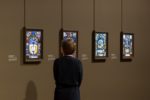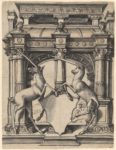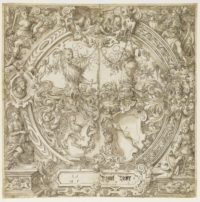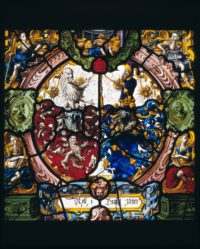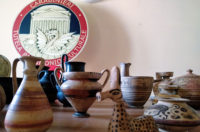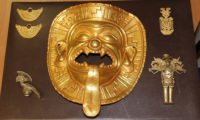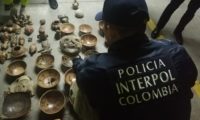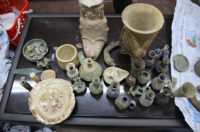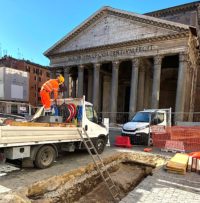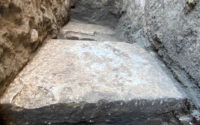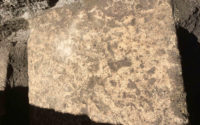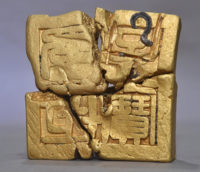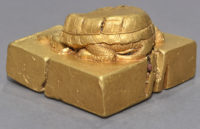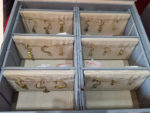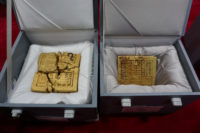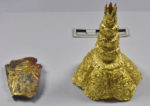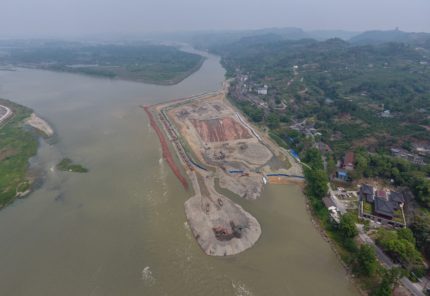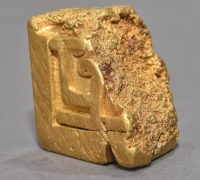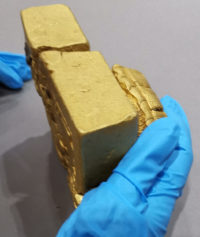 A rare bronze artillery weapon has been discovered in the 14th century fortress of Nečven in Croatia’s Krka National Park. The mačkula was found during conservation work on the remains of the hexagonal tower to the right of the fortress entrance. It is in excellent condition.
A rare bronze artillery weapon has been discovered in the 14th century fortress of Nečven in Croatia’s Krka National Park. The mačkula was found during conservation work on the remains of the hexagonal tower to the right of the fortress entrance. It is in excellent condition.
The mačkula is a mortar-launcher that holds great significance in Croatia’s cultural history. While military technology has long since left it behind, the mačkula is still used today in heritage events, particularly the Sinjska alka, a descendant of knightly jousts held in the town of Sinj to commemorate the unlikely victory of a tiny band of a few hundred Croats and Venetians against an overwhelmingly huge Ottoman force of 60,000 on August 14th, 1715.
 In the event, which was inscribed on the UNESCO Intangible Cultural Heritage list in 2010, horsemen race at a full gallop and drive a lance through an iron hoop (the alka) mounted 11 feet from the ground. The ring is made of two concentric circles connected by three spokes in a Y-shaped configuration. Points awarded depending on which opening the lance goes through. If it goes through one of the bottom two segments left and right of a spoke, the rider earns one point. If it goes through the top wedge, he gets two points. Driving the lance through the tiny central circle earns the horseman three points.
In the event, which was inscribed on the UNESCO Intangible Cultural Heritage list in 2010, horsemen race at a full gallop and drive a lance through an iron hoop (the alka) mounted 11 feet from the ground. The ring is made of two concentric circles connected by three spokes in a Y-shaped configuration. Points awarded depending on which opening the lance goes through. If it goes through one of the bottom two segments left and right of a spoke, the rider earns one point. If it goes through the top wedge, he gets two points. Driving the lance through the tiny central circle earns the horseman three points.
Every time a competitor drives his lance “u sridu” (in the middle) of the alka, a shot is fired from a mačkula. Multiple mačkula shots ring out after the tourney when the winner is proclaimed.
“The mačkula is another valuable finding that will complete the Krka NP archaeological collection and contribute to the valorisation of the cultural and historical heritage of our region,” Nella Slavica, director of the Public Institute of Krka National Park said.
Slavica says that the conservation of the Nečven fortress is a long-lasting project to preserve heritage along with preparatory activities for the future construction of a 462-metre pedestrian suspension bridge over the Krka River connecting Nečven and Trošenj fortresses.
You can hear the shot and see the smoke from a mačkula being fired at the Sinjska alka in this video at the 1:33 mark.
